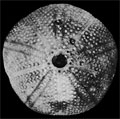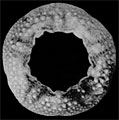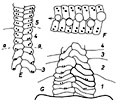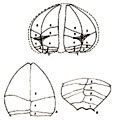The Echinoid Directory
Magnosiopsis Zitt, 1986, p. 375
| Diagnostic Features |
|
|---|---|
| Distribution | Lower Cretaceous (Valanginian), Czech Republic |
| Name gender | feminine |
| Type | Magnosiopsis suessi de Loriol, 1901, p. 15, by original designation |
| Species Included |
|
| Classification and/or Status |
|
| Remarks |
|




